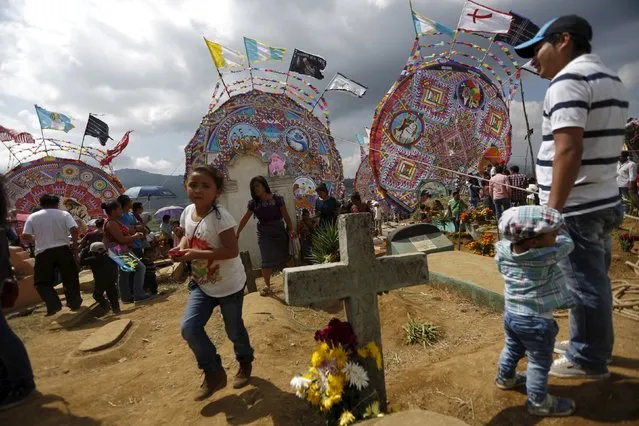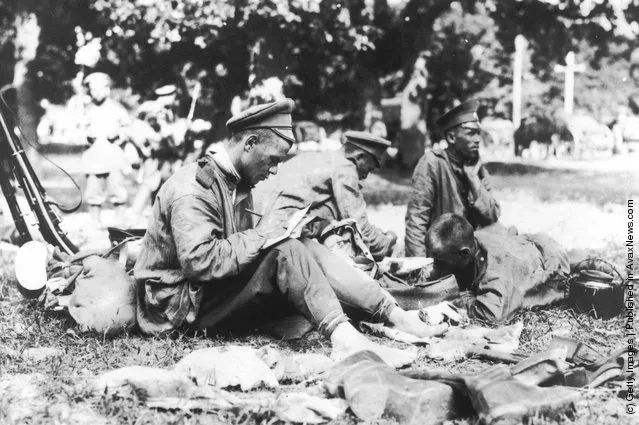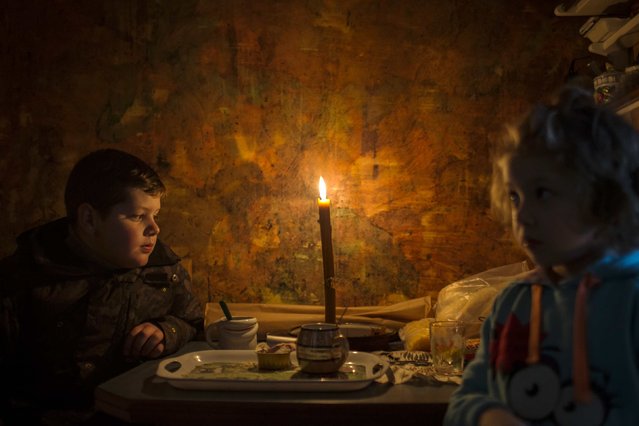
People stand in the middle of the graves and in front of giant kites in the cemetery of Santiago Sacatepequez, Guatemala, November 1, 2015. Dating back 116 years, the tradition of flying kites in the cemetery of of Santiago Sacatepequez, integrates the Catholic feast of All Saints with ancient Mayan practices of honouring the dead. It is believed that the kites connect the living and the dead during the all saints day celebration. (Photo by Jorge Dan Lopez/Reuters)
04 Nov 2015 11:00:00,post received
0 comments







